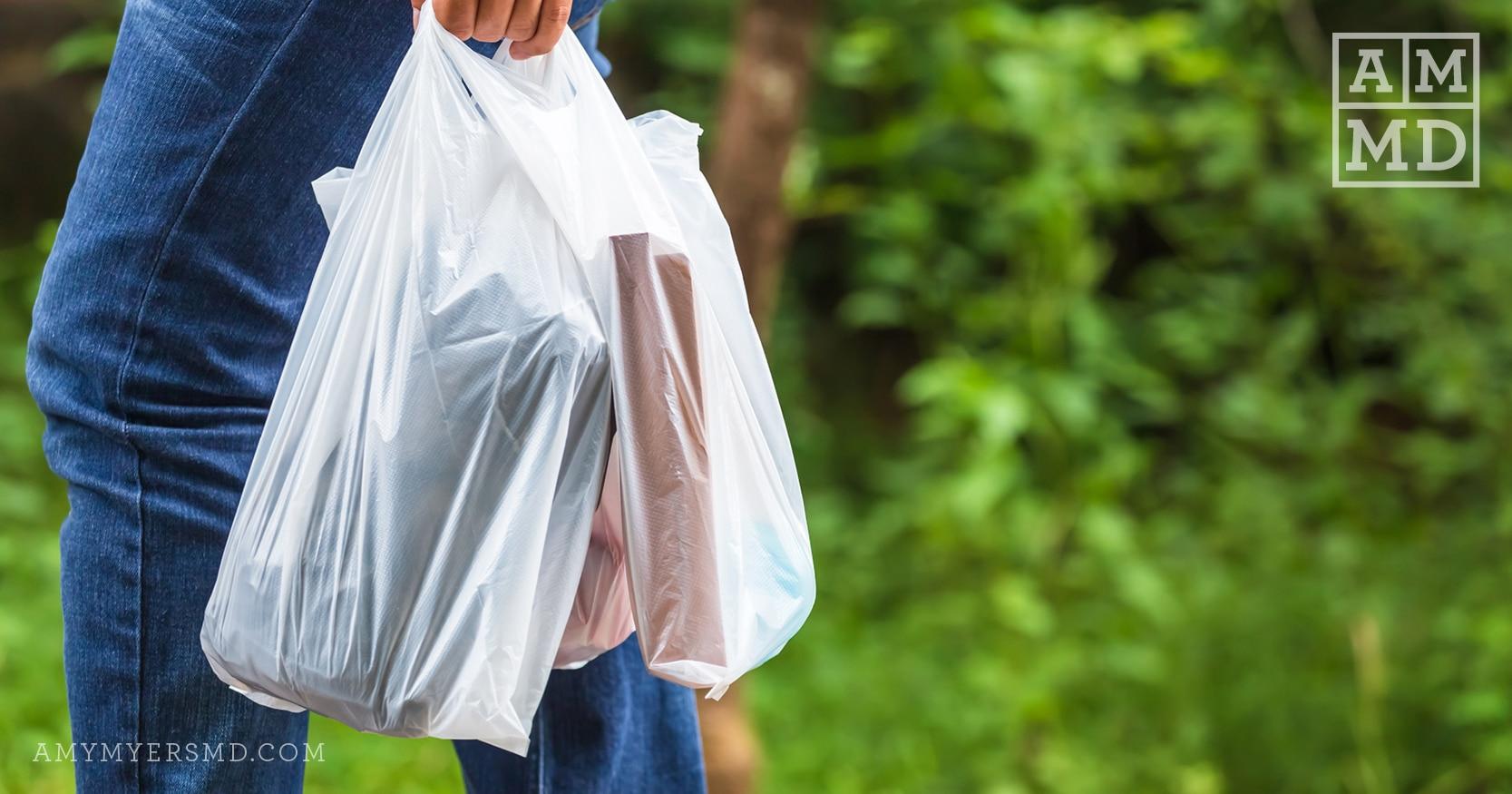You’re probably aware that the single-use plastic bag isn’t good for the environment. Americans use hundreds of billions of them every year. They gather in the streets, oceans, and landfills, where they endanger wildlife and never biodegrade.1
For years, this has been an important issue for me. In fact, I started the first recycling program at the University of South Carolina when I was an undergraduate. I’m proud to say that the program is still going strong!
Like plastic bottles and milk jugs, the single-use plastic bag is recyclable, although usually through a different “stream” than other plastics. Yet, they typically don’t even make it into the recycling bin. Instead, we throw 95% of single-use plastic bags in the trash.2
Are Plastic Bags Made From Recycled Plastic?
Sadly, no. Those flimsy plastic bags are actually the result of a complex manufacturing system.
The four-step process starts with petroleum, a non-renewable resource. Surprisingly, about 6% of all the petroleum produced worldwide goes to the plastics industry. Of that, bag manufacturing uses about 35-40%.3
Next, that petroleum is used to create resin pellets. For the third step, the pellets are pressed and heated to create a film of varying thicknesses. In the last step, the bags are shaped from that film. In many cases, the bags are printed with a design or logo.
Plastic Bag Bans
Literally, we could remove TONS of garbage from our planet if we reduced our reliance on these plastic bags, or even eliminated them. As a start, many states and cities in the United States already have ordinances in place that ban single-use plastic bags4 or levy a tax of up to five cents per bag.5 Countries in Europe and Africa have led the way, with Denmark actually lowering its consumption of plastic bags to an average of four per person annually!6
Plastic bag bans potentially saves millions of tons of plastic from winding up in landfills or our oceans. However, you’ll need to use something else. Yet, choosing the right bag as an alternative to those single-use plastic bags isn’t quite as simple as it might first appear.
Alternatives to the Single-Use Plastic Bag
Paper Bag
Paper bags are biodegradable and easy to recycle or compost. However, producing them requires a lot of water and fuel, and cutting down trees.
If we didn’t recycle paper, we’d need to harvest 80% more wood in the next few years to meet the growing paper consumption demands. With active paper recycling, we’d only need to harvest 20% more wood. Unfortunately, many people throw away their paper bags. If we recycle them, we can reuse the paper, although not usually for bags.
Paper bags aren’t usually made from recycled material. That’s because new paper has longer and stronger fibers. What’s more, for paper bags to have lower global warming potential than single-use plastic bags, they should be used at least three times. That means you need to be careful not to rip them.
Reusable Plastic Bag
The bag industry uses two types of plastic to make reusable plastic bags: nonwoven polypropylene plastic and low-density polyethylene. Grocery stores often sell these bags. These reusable plastic bags are actually less carbon-intensive to produce than paper ones.
You’ll need to use nonwoven polypropylene reusable grocery bags at least 11 times to make them a good alternative. Four times is the number you’ll need to hit with reusing low-density polyethylene. Nonwoven poly bags look like they have tiny square stamps in the fabric. Low-density polyethylene has a smooth appearance that looks woven under the surface and is often shiny.
Cotton Bag
Cotton bags are usually more expensive. The agricultural processes used to make non-organic cotton bags involve a lot of pesticides and water use. Use cotton bags 131 times if you want to offset the environmental cost of producing them.
That’s why using recycled cotton is so important! I’m proud I’ve created the Amy Myers MD® canvas tote bag. I designed it to be roomy enough to carry a week’s worth of organic groceries home from the store or a large stack of holiday goodies! My tote bag will last for years because I chose such a sturdy fabric. You’ll be able to use it thousands of times, keeping more plastic out of landfills and protecting our precious resources.
No matter what type of bag you select, please remember to reuse it rather than placing it in the trash. It’s one small thing we can each do to make our world a cleaner, healthier place.

Article Sources
- https://phys.org/news/2018-08-reuse-bags.html.
- https://www.globalcitizen.org/en/content/follow-the-plastic-bags-polybags-recycling/.
- https://greentumble.com/how-are-plastic-bags-made.
- https://www.ncsl.org/research/environment-and-natural-resources/plastic-bag-legislation.aspx.
- //www.earth-policy.org/images/uploads/press_room/Plastic_Bags.pdf.
- //www.earth-policy.org/images/uploads/press_room/Plastic_Bags.pdf.
